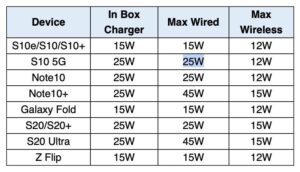Battery acid is a corrosive substance that can cause serious harm if mishandled. So, what does battery acid look like? It appears as a clear or slightly yellow liquid, often with a strong acrid odor. Recognizing battery acid is crucial for safety, especially when dealing with leakages or battery-related accidents. By understanding its appearance, you can take the necessary precautions to protect yourself and others. In this article, we will explore the characteristics of battery acid and provide you with valuable knowledge to ensure your safety in various situations. Let’s dive in!
What Does Battery Acid Look Like?
Battery acid is a crucial component of lead-acid batteries that are commonly used in automobiles, motorcycles, boats, and other vehicles. This corrosive liquid performs the essential function of facilitating the flow of electrons between the battery’s electrodes, allowing for the storage and release of electrical energy. While battery acid is a vital part of a battery’s functionality, it is important to be cautious and handle it properly due to its hazardous nature. In this article, we will explore in detail what battery acid looks like, its composition, potential hazards, and how to handle it safely.
Composition of Battery Acid
Battery acid, also known as sulfuric acid, is a strong, highly corrosive liquid. Its chemical formula is H2SO4, indicating that it consists of two hydrogen atoms (H), one sulfur atom (S), and four oxygen atoms (O). When battery acid is exposed to water, it undergoes a chemical reaction called ionization, which results in the release of hydrogen ions (H+) and sulfate ions (SO4-2). These ions are responsible for the acid’s corrosive properties.
The concentration of battery acid can vary depending on the type of battery. In fully charged lead-acid batteries, the acid typically has a concentration of about 37% to 40%. Diluted acid, also known as electrolyte, is used to ensure optimal battery performance while minimizing the risk of damage to the battery components.
Physical Appearance of Battery Acid
Battery acid is typically a clear or slightly yellowish liquid. Its color may vary depending on impurities or additives present in the acid. However, the liquid is often translucent and can sometimes appear like water, making it challenging to distinguish without proper identification.
The consistency of battery acid is similar to water, allowing it to flow freely within the battery compartment. It does not have a distinct odor, which further adds to the difficulty of identifying it based on sensory cues alone. Therefore, it is crucial to exercise caution and use appropriate safety measures when handling any liquid within a battery compartment.
Identifying Battery Acid
Given that battery acid closely resembles water in appearance, it is essential to rely on other identification methods to ensure safe handling. Here are some effective ways to identify battery acid:
Labeling and Color Coding:
Battery acid is commonly labeled or color-coded in lead-acid batteries to help users identify it without confusion. Manufacturers often use warning labels and distinctive color caps or tops to mark the areas where the acid is present. These labels are typically designed with bright colors such as red, yellow, or white, serving as an immediate visual cue for the presence of acid.
Specific Gravity:
Another method to identify battery acid is by measuring its specific gravity. Battery acid has a higher specific gravity compared to water. When using a hydrometer, the reading for battery acid will be above 1.000, typically around 1.280 to 1.290. This variance helps differentiate it from water, which has a specific gravity of 1.000.
pH Testing:
Battery acid has a very low pH, typically between 0 and 1. This acidity is due to the high concentration of hydrogen ions present in the acid. By using a pH test strip or a pH meter, it is possible to determine the acidity of a liquid and confirm whether it is battery acid.
Professional Assistance:
If you are uncertain about identifying battery acid, it is always recommended to seek professional assistance. Automotive technicians or battery experts can help confirm the presence of battery acid and provide guidance on handling and disposal.
Potential Hazards of Battery Acid
Battery acid poses several hazards due to its corrosive nature. These hazards include:
- Corrosion: Battery acid can corrode various materials, including skin, clothing, metals, and other surfaces it comes into contact with. The corrosive properties of the acid can cause severe burns and damage.
- Toxic Fumes: When battery acid reacts with other substances, it may release toxic fumes, such as sulfur dioxide. Inhalation of these fumes can lead to respiratory issues and other health problems.
- Eye and Skin Irritation: Direct contact with battery acid can cause irritation, redness, and burns on the skin and eyes. It is crucial to avoid any contact and take immediate action if accidental exposure occurs.
It is essential to handle battery acid with care and take appropriate safety measures to avoid these potential hazards. By understanding the risks associated with battery acid, it becomes easier to take necessary precautions and minimize the chances of accidents or injuries.
Safely Handling Battery Acid
To ensure the safe handling of battery acid, follow these guidelines:
Protective Gear:
Always wear appropriate personal protective equipment (PPE) when working with battery acid. This includes safety goggles, gloves, and a protective apron or clothing to prevent direct contact with the acid.
Ventilation:
Work in a well-ventilated area to minimize the risk of inhaling any toxic fumes that may be released during battery acid handling or maintenance.
Avoid Spills:
When handling battery acid, be cautious to prevent any spills or leaks. Use a funnel or a specific pouring mechanism to transfer the acid without any splashing or splattering.
Neutralize Spills:
In the event of a spill, take immediate action to neutralize the acid. Use a neutralizing agent, such as baking soda (sodium bicarbonate), to help neutralize the acid and minimize the risk of corrosive damage. Clean up the spill thoroughly and dispose of any contaminated materials safely.
Proper Disposal:
When disposing of battery acid or any materials contaminated with acid, follow local regulations and guidelines. Contact your local waste management facility or hazardous waste collection center to ensure proper disposal methods are followed.
Understanding what battery acid looks like and the potential hazards it poses is essential for anyone working with lead-acid batteries. Battery acid, or sulfuric acid, is a highly corrosive liquid that is crucial for the functioning of batteries but requires careful handling to prevent accidents and injuries. While battery acid closely resembles water in appearance, it can be identified through labeling, color coding, measuring specific gravity, and pH testing. By prioritizing safety measures and following proper handling and disposal protocols, individuals can work with battery acid safely and efficiently. Remember, if you are unsure or uncomfortable handling battery acid, it is always best to seek professional assistance to avoid any risks or mishaps.
Frequently Asked Questions
What does battery acid look like?
Battery acid is usually a clear or slightly yellow liquid. It has a watery consistency and is often found inside lead-acid batteries, such as car batteries.
Is battery acid always clear?
No, battery acid can sometimes appear slightly yellow. This yellow tint is due to impurities or the presence of additives in the acid. However, in most cases, it is still transparent or close to being clear.
Can battery acid be thick or gooey?
No, battery acid is typically not thick or gooey. It is more like water in consistency, with a liquid form. If you notice a thick or gooey substance near your battery, it could be a sign of corrosion or a leak from the battery, which may require immediate attention.
What if the battery acid is a different color?
If you observe battery acid that is a different color than clear or slightly yellow, it could indicate a potential issue with the battery. Unusual colors like green, brown, or blue might suggest contamination or damage to the battery. In such cases, it is recommended to seek professional assistance and have the battery inspected or replaced if necessary.
Is battery acid dangerous to touch?
Yes, battery acid is corrosive and can be harmful if it comes into direct contact with your skin. It can cause skin irritation, burns, and even chemical burns in severe cases. It is important to handle battery acid with caution and wear appropriate protective gear, such as gloves and goggles, when dealing with batteries.
What should I do if I come in contact with battery acid?
If you accidentally come in contact with battery acid, it is crucial to take immediate action. Rinse the affected area with plenty of water for at least 15 minutes to remove any traces of acid. If any irritation or burning sensation persists, seek medical attention promptly.
Final Thoughts
Battery acid is a corrosive substance that can cause severe damage if not handled correctly. It typically appears as a clear or slightly yellow liquid with a strong odor. When exposed to air, it may form a white crystalline powder. Battery acid can be identified by its acidic properties, causing it to fizz or bubble when it comes into contact with certain materials. It is crucial to wear protective gear and handle battery acid with caution to avoid harm. So, remember, what does battery acid look like? It is a transparent or slightly yellow liquid with a distinct smell, and it is highly corrosive.



